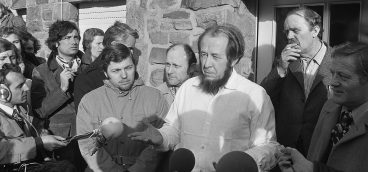The Oxford Companion — a Drinker’s Bible

“What whiskey won’t cure there is no cure for.” — Irish proverb
Maybe you’ve noticed those annoying people who conduct all their video calls in front of a carefully curated bookcase full of impossibly erudite volumes that no one – including them – ever actually reads.
What you won’t find on those carefully curated bookcases are the books these people actually read: best-sellers, chick lit, soft-core porn.
Among the erudite volumes that frequently appear on video-call bookcases are the various “Oxford Companions.” Most anything published by Oxford University Press (known as OUP to us cognoscenti) will qualify as “erudite” for purposes of a video call, of course, but the ones you see most often are The Oxford Companion to Philosophy, or, say, The Oxford Companion to Classical Civilization.
Astonishingly, OUP has published more than 100 of these “Oxford Companions” over the years, beginning in 1932 with The Oxford Companion to English Literature. Most of the Companions are, sadly, no longer in print. This is either because they have become embarrassingly out-of-date (the just-mentioned The Oxford Companion to English Literature, for example) or because OUP badly overestimated the public’s appetite for The Oxford Companion to Australian Folklore or The Oxford Companion to Soap. (Okay, I made that one up.)
Those of my readers who’ve been on a video call with me will know that the carefully curated bookcase behind me contains only one volume: The Oxford Companion to Spirits and Cocktails. What else could a person need? I hasten to add that my interest in the subject is, of course, purely academic.
So, I thought to myself, what about all those nice people out there who might also have a keenly academic interest in booze, but who aren’t about to blow $65 on a book about it? Better yet, maybe some of those people could be tempted to go out and buy a copy of TOCSC for their favorite sot – perhaps a holiday gift idea? If not, they might at least get their own copies of TOCSC, stock up their liquor cabinets, hide the car keys, and start testing recipes.
For all those people I’m happy to provide some fascinating tidbits from TOCSC. But first, a few quibbles, beginning with:
Giantism. TOCSC is 834 pages long, but even that preposterous length doesn’t begin to hint at the scale of the book. It’s a “large format” book with pages that measure 10 inches high by seven inches wide. These pages are massive enough to contain not one but two columns of text in small font, each column containing more words than you will find on a page of the normal fluff we usually read. In other words, reading TOCSC is like reading a 2,000-page novel – it’s nearly twice as long as War and Peace.
How could TOCSC have gotten so huge? The short answer is that the book’s editors lost control of the thing, exposing the over-burdened reader to way-too-many obscure topics and also going on at way-too-much length about topics that should have been only briefly mentioned.
But there’s a longer answer, too. In the first place, the editing profession is as extinct as the two-dollar martini. I don’t mean the “editors” of TOCSC, I mean the editors at Oxford University Press, who apparently don’t exist. Every nonfiction book published in English today – and many fiction books – is twice as long as it needs to be, and frequently three or four times as long. Last year, for example, I read a very interesting 400-page book on the history of the early Middle Ages. Unfortunately, the book was 900 pages long.
In the second place, TOCSC isn’t the work of one human mind who simply developed OCD at about page 400. The book has (are you sitting down?) 150 contributors and they’re all listed – with bios! – in the back of the book. This isn’t called writing a book, this is what we used to call in the army “a royal cluster****.”
While I’m quibbling, let’s look at:
Metric mania. All the measurements in TOCSC are metric. Hello? What we have in our liquor cabinets is jiggers, and jiggers measure booze in ounces and have done so for at least 200 years. But instead of telling us that a certain cocktail is made by using one jigger of this and two jiggers of that – or one ounce of this and two ounces of that – the damned book tells us to pour 30 ml of this and 60 ml of that. Who the hell knows what a “ml” is? Who even wants to know?
Ah, you are thinking, that’s because the book is published by Oxford University Press and when the UK joined the EU they sold out and switched to the metric system. But you would be wrong. TOCSC wasn’t published by OUP UK, it was published by OUP USA. Not only that, but the editor-in-chief of the book is from Pittsburgh, Pennsylvania.
There is only one possible explanation for this hapless bit of metric mania – very, very bad judgment.
Whiskey phobia. The commercial distillation of whiskies in Scotland began in the late 18th century and almost immediately commercial production of whiskies also began in America and Ireland. To distinguish these very different spirits, Scotch was called “whisky” and the other two were called “whiskey.” In other words that spelling convention goes back almost 250 years, and for at least 75 years it has been a hard-and-fast rule, no different from the spelling of curb (US) versus kerb (UK) or labor (US) versus labour (UK).
To ignore this rule is to give serious offense (US) or offence (UK) and to gravely confuse the reader. Why does TOCSC do it? See “very, very bad judgment,” above.
Poor quality. I don’t mean the poor quality of the book’s text, I mean the poor quality of the physical book itself. If you are going to foist off on the public an 834-page, large-format book clocking in at several pounds, the least you can do is to build it right.
I’m no expert on bookbinding, but by the time I was halfway through TOCSC the front and back covers had separated from the spine at the joint, and by the time I’d finished the book it looked like it had been targeted by a Ukrainian drone. OUP should be ashamed of itself.
Still, compared to the delights of TOCSC, these are truly quibbles, as we’ll see next week.
Next up: The Oxford Companion, Part 2














